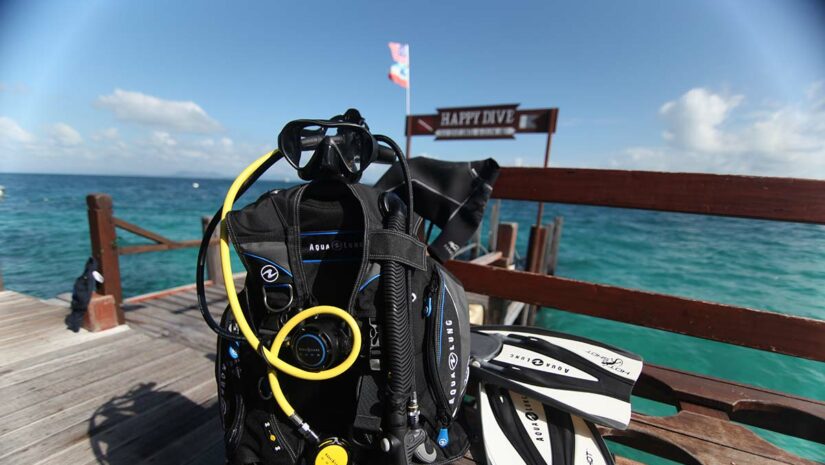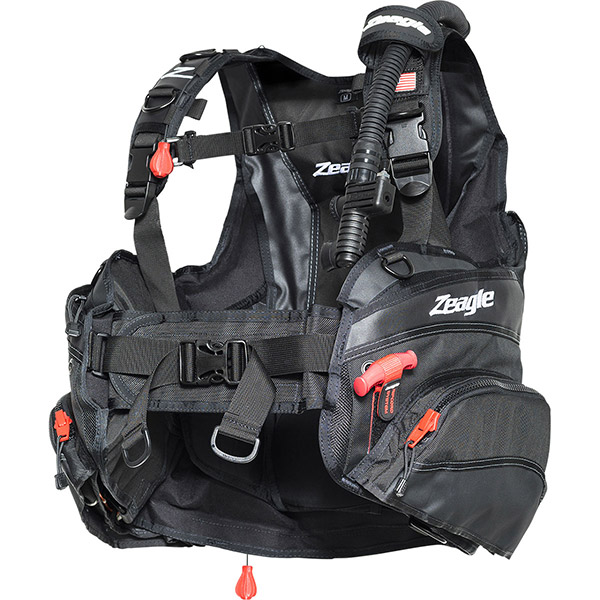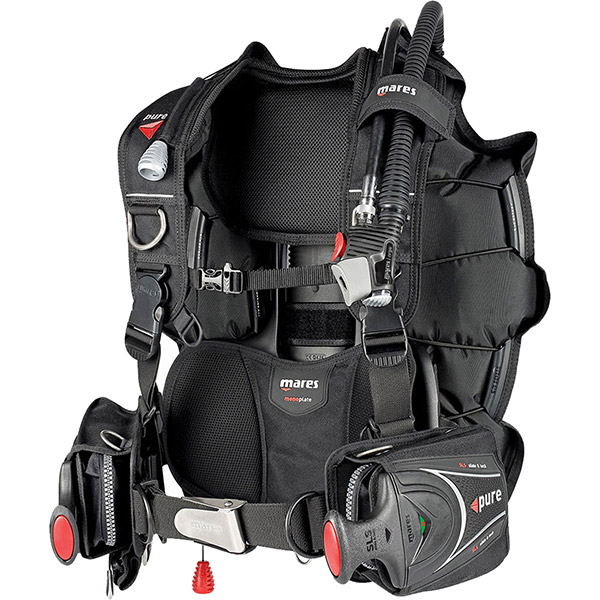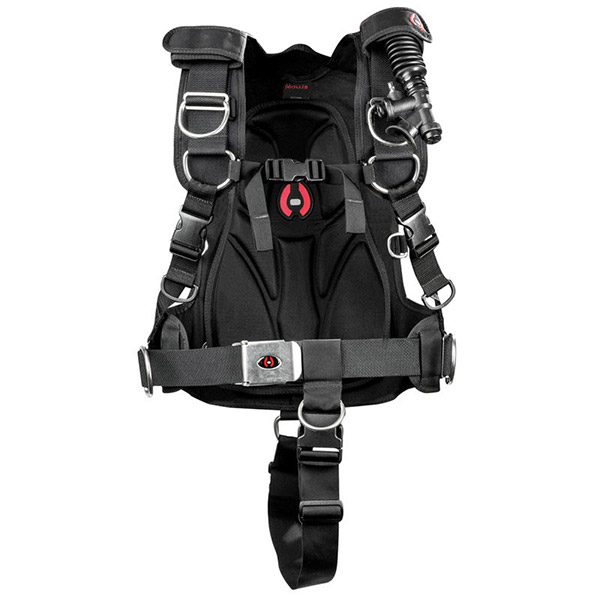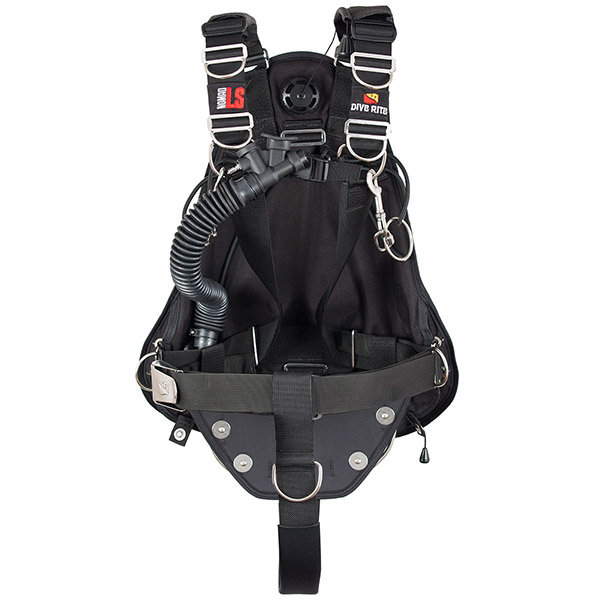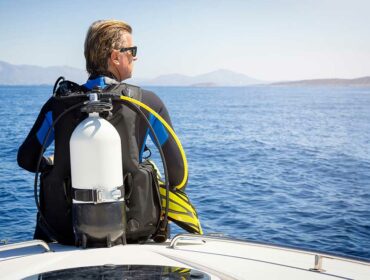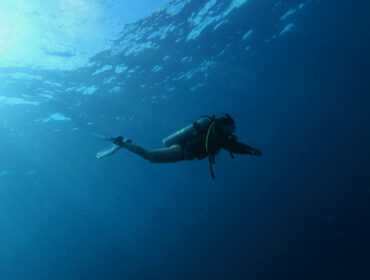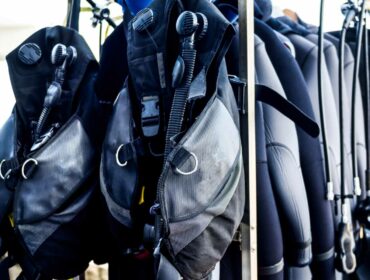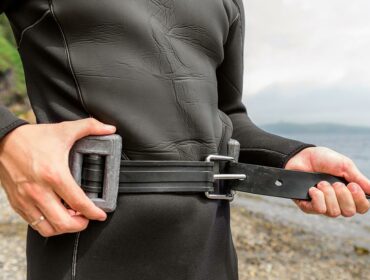Ready to embark upon your scuba underwater adventure? Along with the other scuba diving gear you’ll need a BCD — or a Buoyancy Compensator Device — is an important part of your equipment checklist.
But before you choose the best BCD for you, you’ll have to determine which type of BCD best suits your diving style. Here’s how to choose.
Types of BCDs
Jacket BCD (or Vest Type, Front-Adjustable Jacket)
The Vest Type BCD also known as the Jacket Type/Front adjustable Jacket is perhaps the most common type of BCD and has been in existence for a long time. The BCD consists of a wearable sleeveless jacket into which an air bladder is integrated that wraps around the diver. The types and configurations of this kind of BCD are numerous, but the basic premise remains that the bladder wraps around and inflates both in front, on the sides and behind the diver. Jacket BCD’s are extremely stable on the surface and act somewhat like a life jacket, however in the water they create more drag as they contain more padding and a cummerbund. Divers who often complain that these are more restrictive than Back Inflate BCD’s and cause chest squeeze when inflated causing discomfort. However the Vest Type BCD is often very comfortable and provides pockets for storage and pouches for weight integration.
Back Inflation BCD
The Back Inflate BCD is a newer addition to the world of gear and has no inflatable bladders on the front or sides leaving the diver’s chest area completely uncluttered with the exception of chest straps. The flotation bladders are positioned on either side of the tank which give the diver a great degree of mobility and freedom of movement and also makes the diver much more streamlined in the water as there is less drag created by the BCD. Back inflation removes the diver squeeze that can occur while inflating a jacket /vest type BCD. The other major advantages of Back Inflate BCD’s are that they are much more compact than jacket type vests making them preferred by divers who travel by air frequently as they pack well.
Drawbacks of purchasing a Back Inflate BCD are only on the surface of the water where the flotation bladders on the back pitch the diver forward/face first rather than remain vertical which takes some getting used to but is not a huge drawback in any way. A vest/jacket type bladder provides you with even flotation on the surface of the water as the bladder surrounds the diver. The forward pitching on the Back Inflate BCD can be easily corrected by the diver in the water by shifting his weight backward and performing surface swims on your back or face down with a snorkel.
Technical Harness: Back Plate & Wing BCD
The Back plate and wing BCD is perhaps the most streamlined of the three types of BCD’s and does not contain, weight pockets or harnesses in the front. It merely consists of a metal back plate made of aluminum or steel through which a continuous harness with waist belt and crotch strap is looped through notches in the plate. Onto the back of the plate is mounted a wing type bladder (similar to the back inflate BCD above) that inflates on either side of the tank which is attached to the middle. A back inflate or wing puts the buoyancy closer to the tank which is where a significant portion of the weight is, so having the buoyancy there gives the greatest stability in the water. Any type of inflatable wings may be attached to the back plate making this form of BCD highly customizable and preferred by divers that switch between single and double tank diving as well as technical divers that carry multiple tanks on the harness. Cave divers and wreck divers too prefer this form of BCD as it is highly streamlined, offers great mobility and allows the diver to squeeze into tight spaces with ease.
The single biggest drawback of the back plate and wing BCD is the lack of pockets for dive accessories or weight integration pockets, which is why most recreational divers and divers starting out in Scuba Diving prefer Back Inflate or Vest Type BCD’s. The harness may have d-rings though onto which scuba gear may be clipped on to.
Sidemount BCD
In the sidemount BCD system, you can expect greater buoyancy control and a completely different setup than a jacket-style option. Here, as the name suggests, you’ll have your cylinders at your sides. Built for ease and control during wreck dives and cave dives, in particular, you’ll enjoy the sidemount diving ease. Whether you choose a single- or double-cylinder setup, you may find greater balance by opting for a sidemount BCD.

